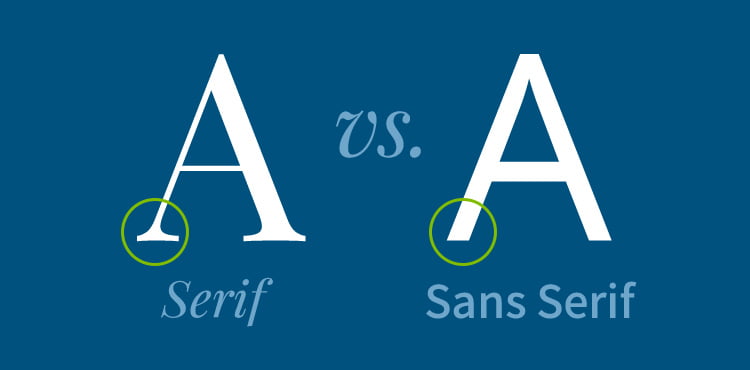
Arguments in favour of serif typefaces Serifs are used to guide the horizontal “flow” of the eyes The lack of serifs is said to contribute to a vertical stress in sans serifs, which is supposed to compete with the horizontal flow of reading ( De Lange et al., 1993 )

Nor have they managed to make their work sufficiently known in the typographic community ( Spencer, 1968, p.6 ). Most disappointing however, is that in more than one hundred years of legibility research, researchers have failed to form a concrete body of theoretical knowledge on the part that serifs may play in legibility ( Lund, 1999 ). Unfortunately, many researchers, typographers and graphic designers continue to cite Burt and Weildon uncritically, meaning that many of the informal resources on typography found on the web today continues to propagate unsubstantiated claims on the utility of serifs. It turns out that he is likely to have continued this deceptive behaviour in his typographical work ( Hartley & Rooum, 1983 ). Particularly interesting is the case of Sir Cyril Burt, well known in psychology circles for being accused of fabricating his results. See this post for a more detailed critique of Weildon’s research. There are some high profile studies which claim to show the superiority of serif typefaces ( Robinson et al., 1983 Burt, 1959 Weildon, 1995 ) but these have been soundly criticised on points of methodology. There are plenty of studies that show no difference between the legibility of serif and sans serif typefaces ( Tinker, 1932 Zachrisson, 1965 Bernard et al., 2001 Tullis et al., 1995 De Lange et al., 1993 Moriarty & Scheiner, 1984 Poulton, 1965 Coghill, 1980) ). Evidence Overview of legibility research: serif vs. “Sans serif” fonts do not have these small finishing strokes.Īscenders and descenders 2. “Serifs” are the small finishing strokes on the end of a character. There are many elements in the design of a typeface which can contribute to its legibility. But the most legible of types can be made unreadable if it is set to too wide a measure, or in too large or too small a size for a particular purpose.( Dowding 1957, p.5 in Lund, 1999 ) Typographical features Readability however concerns the optimum arrangement and layout of whole bodies of text:Īn illegible type, set it how you will, cannot be made readable. Legibility is concerned with the very fine details of typeface design, and in an operational context this usually means the ability to recognise individual letters or words. Part 2 reviews the evidence for and against the legibility of serif and sans serif typefaces. Part 1 provides typographical definitions. IntroductionĪn argument has been raging for decades within the scientific and typographic communities on what seems a very insignificant issue: Do serifs contribute to the legibility of typefaces, and by definition, are sans serif typefaces less legible? To date, no one has managed to provide a conclusive answer to this issue. In 2003 as part of my master’s degree I reviewed over 50 empirical studies in typography and found a definitive answer. Was it the case that sans serif fonts were more legible, or was it just a matter of taste?

See my expanded critique of Colin Wheildon’s legibility research.īack in 1998 when Times New Roman was still widely used on the web, my then boss made sure we always designed our web sites with Arial, as she hated the look of serif fonts on the web.


 0 kommentar(er)
0 kommentar(er)
